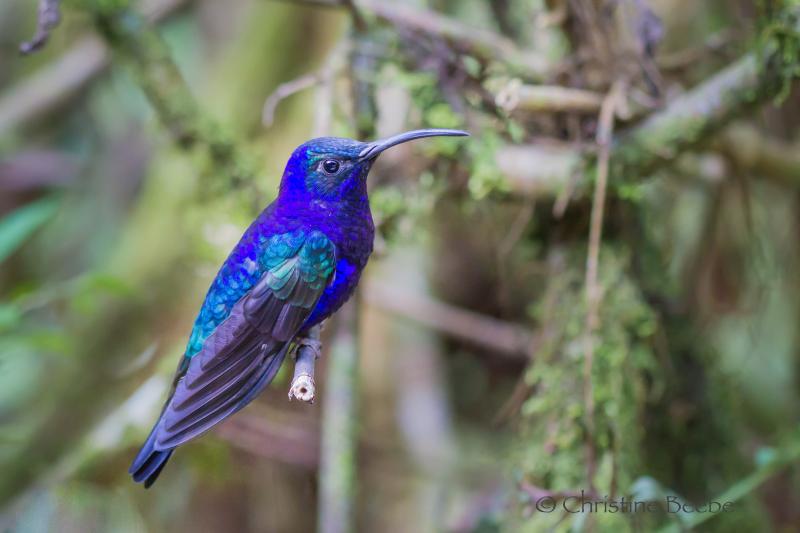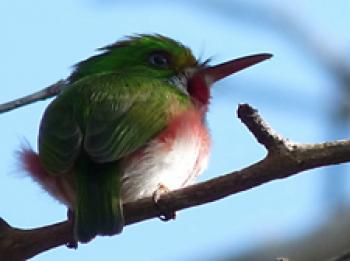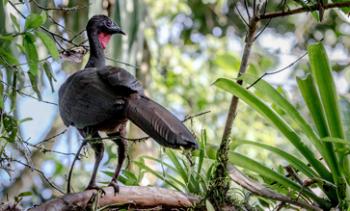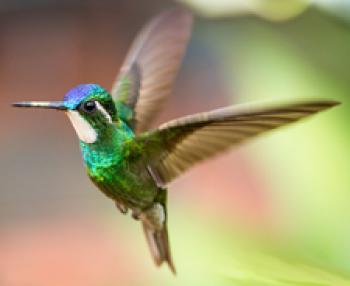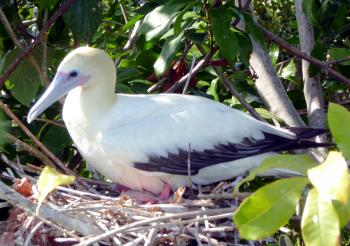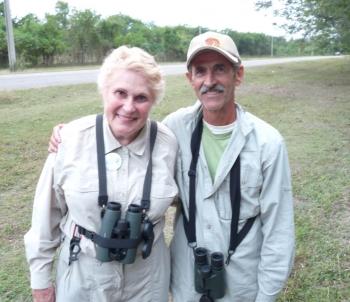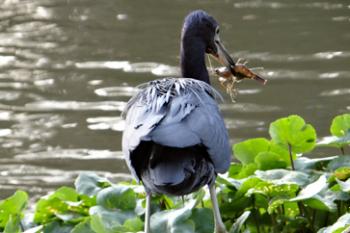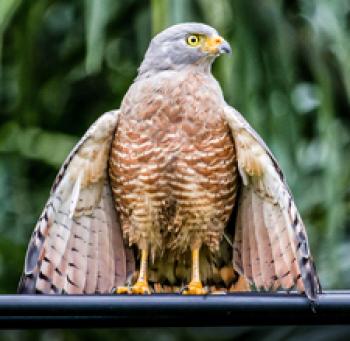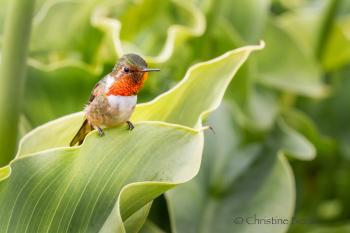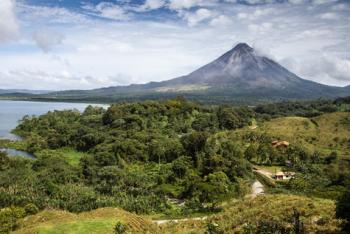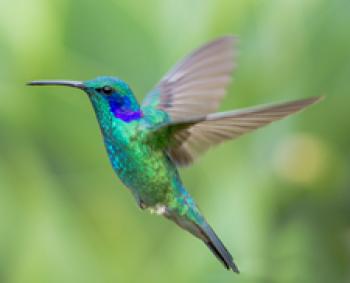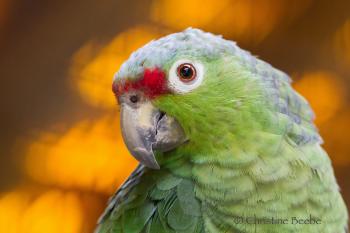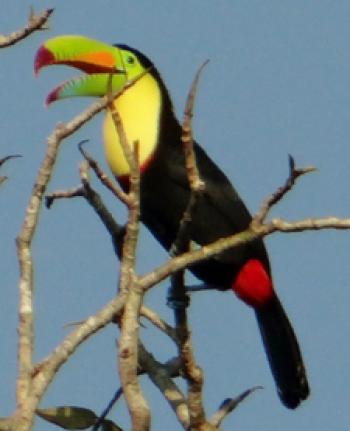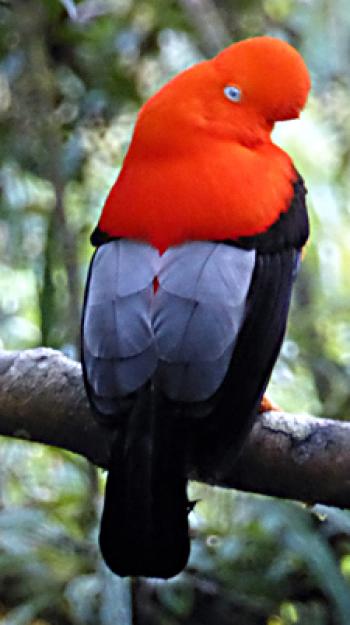A Good Bird-watching Site
Subscribers were invited to write in about places (outside of the US) where they’ve had rewarding sightings of birds. In addition to providing details about the types of birds they saw, we asked travelers to each tell us where they were (including any helpful contact info, if applicable) and the year and time of year of their visit and even the time of day. We also wanted to know how difficult it was to reach the area, what preparations others should make who wish to go there, what equipment is recommended and what the weather was like.
We received a swarm of responses (we cannot accept more submissions), which we grouped by area and will be printing over several months, starting this month with sightings in the Americas and the Caribbean.
My husband and I have taken a number of wildlife-watching trips. We are not serious bird-watchers, but we will take a bird book for the area along on each trip and record sightings in it. Here are a few highlights of our experiences in Latin America.
•
We have visited BELIZE twice, in March 2017 and April-May 2013, with Adventure Life (Missoula, MT; 800/344-6118, www.adventure-life.com) arranging both trips for us.
Both times, we stayed at Pook’s Hill Lodge (P.O. Box 14, Belmopan, Belize; phone +501 832 2017, pooks hilllodge.com), in the jungle. There were bird feeders there, and nature books were available.
They provided guided birding tours, but we preferred to hike the trails independently. Over 300 birds have been reported there. Our sightings included spectacled owls, toucans, trogons, orioles, flycatchers, woodpeckers and hummingbirds.
In March 2017, we also visited Lighthouse Reef at Half Moon Caye National Monument, the outermost of the three atolls at Belize’s Barrier Reef. The Belize Audubon Society (www.belizeaudubon.org) has built viewing platforms there for easy observation of a colony of nesting red-footed boobies and magnificent frigate birds.
We stayed at the base camp operated by Island Expeditions (P.O. Box 9, 4-1384 Portage Rd., Pemberton, B.C., V0N 2L0, Canada; 800/667-1630, www.islandexpeditions.com), but you can visit on day trips from the mainland.
On that trip, we briefly visited the Crooked Tree Wildlife Sanctuary, also run by the Belize Audubon Society. This facility was set up to protect jabirus and wood storks, but we saw other water birds there, such as roseate spoonbills, white ibises and various herons and egrets.
•
In December 2016-January 2017, as part of an Earthwatch (Boston, MA; 800/776-0188, www.earthwatch.org) science voluntourism expedition, we spent a week in COSTA RICA at La Selva Biological Station, which is run by the Organization for Tropical Studies.
Birds were not the focus of our time there, but you couldn’t miss them. During meals, Passerini’s tanagers flew around the dining area looking for food, landing on the tables and chairs. We saw orange-chinned parakeets and collared aracaris in the trees next to the dining area as well as great curassows, collared redstarts and slaty-tailed trogons while walking the grounds.
Day visitors are not allowed on the trails except as part of a guided tour, but overnight visitors may walk most of the trails unescorted. The bird list at La Selva has 412 species.
A previous trip to Costa Rica, in January-February 2012, included a stay at the Arenal Observatory Lodge (La Fortuna, Arenal, Costa Rica; phone, in the US, 877/804-7732, www.arenalobservatorylodge.com).
A feeding station near the dining area attracted Montezuma oropendolas, Cherrie’s tanagers and blue-gray tanagers. While walking the trails, we saw the red-legged honeycreeper, summer tanager, chestnut-mandibled toucan and crested guan. The bird list at this lodge has over 500 species.
•
PERU has the high Andes, the Amazon, the seacoast and everything in between. This variety of ecozones offers many bird-watching opportunities, but I will mention only a few.
In September 2016, we visited the cloud forest near Manú National Park and the rainforest in the Madre de Dios region.
The cloud forest visit was operated by InkaNatura Travel (Av. Petit Thouars 3811, San Isidro, Lima, Peru; phone, in the US, 888/870-7378, www.inkanatura.com), although we booked it through another agency.
We stayed at the Cock of the Rock Lodge to visit a nearby lek of the Andean cock-of-the-rock. This early-morning visit allowed us to see brightly colored males competing for the attention of the drabber females.
The lodge also had bird feeders that attracted silver-beaked, golden, paradise, blue-winged mountain and golden-eared tanagers, several types of hummingbirds and cinereous tinamous.
Next we spent two weeks in the rainforest near Puerto Maldonado on a science voluntourism expedition with Biosphere Expeditions (Longwo, FL; 800/407-5761, www.biosphere-expeditions.org). This was a research expedition, but independent excursions to clay licks can easily be arranged by the lodges in Puerto Maldonado.
The research involved watching hundreds of red-and-green macaws and blue-headed and mealy parrots at a colpa (clay lick) on the riverbank, recording their numbers and behaviors. Scarlet and blue-headed macaws also visited, as did orange-cheeked and white-bellied parrots.
•
The GALÁPAGOS ISLANDS of Ecuador are an obvious bird-watching site, as the animals have never learned to fear humans. People mostly visit on cruises, although there are some land-based tours.
Note that visitors must be escorted by rangers at all times on land. Also, some birds can be seen only at specific times and places. We were there in July 1999 and were lucky to see waved (or Galápagos) albatrosses nesting, which can be seen only for a few months each year on Española island.
For bird-watching overseas, having a guide with you can be a real plus, as they know the spots where the birds hang out and can identify the birds you find. Paging through a bird book while the bird flits in and out of sight can be frustrating.
Happy bird-watching!
Pauline Ho
Albuquerque, NM
While visiting TRINIDAD & TOBAGO a couple decades ago, we stayed at the Asa Wright Nature Centre (asawright.org) and toured Caroni Swamp.
This place was a highlight of our birding adventures and is a must for anyone interested in birds and natural wonders. Around 400 species of birds migrate through the nature center each year, and tours and hikes can be arranged there.
Bonnie & Bill Whyte
Reston, VA
My husband, Peter, and I are rabid bird-watchers, with 5,300 spotted species on our list. One of the most exciting bird-watching trips we have had was one to CUBA in January 2010 with the Cincinnati Nature Center (Milford, OH; 513/831-1711, www.cincynature.org), under the license and auspice of the Caribbean Conservation Trust of New Haven, Connecticut.
At the time we went, the Cincinnati Nature Center offered about four “safaris” to different nature areas of the world every year.*
In Cuba for two weeks, we visited the countryside and many parks and reserves, getting advice from the rangers.
My most exciting bird was the bee hummingbird, which we saw in Parque Nacional Ciénaga de Zapata (Zapata Swamp National Park) in Matanzas province. A tiny jewel, it is the world’s smallest bird, up to 2¼ inches long from beak tip to tail tip and weighing less than a tenth of an ounce.
The male is green on the back, with a bright-red gorget and a white abdomen. It looks quite round and chunky.
This national park also has beautiful beaches, and people scuba dive there too.
Although we saw 130 species of birds in our two weeks in Cuba, the bee hummingbird remains special in my memory.
Linda Beuret
Santa Barbara, CA
* The Cincinnati Nature Center will still help you plan a custom trip, but regularly scheduled tours are no longer offered.
I visited COSTA RICA in February 2017 on a tour with Gate 1 Travel (Fort Washington, PA; 800/682-3333, www.gate1travel.com), a company I highly recommend. We went to the Caño Negro Wildlife Refuge and Tortuguero, Arenal Volcano and Manuel Antonio national parks, all of which have lots of birds, as they all are near water.
In Tortuguero, our guide took us on a 6 a.m. walking tour of our hotel grounds, during which we saw many parrots and toucans. On a cruise of the Tortuguero canals, I spotted a blue heron eating a shrimp.
At the Rio Frío, in Caño Negro Wildlife Refuge, we saw bright-green little parakeets as well as bats lined up on a tree.
At our hotel near Manuel Antonio, Sí Como No (Manuel Antonio Road Km 4, Costa Rica; phone, in the US, 888/742-6667, www.sicomono.com), we again saw many parrots and toucans in the trees.
Typically, the best viewing times for birds are early morning and late afternoon/early evening, when there is less heat.
You will need a camera with a long zoom. I use a Sony Cybershot DSC HX 200 with 30x zoom and auto viewfinder (which really helps when it’s too sunny to see the LCD screen).
Helen W. Melman
Los Angeles, CA
COSTA RICA is a gorgeous neotropical destination brimming with an incredible diversity of plants and wildlife. Over 900 species of birds have been documented there.
I spent two weeks there in mid-January 2011, joining a small, custom bird-watching tour for the first 10 days. My guide was Noel Ureña, cofounder of the birding tour company Tropical Feathers (P.O. Box 482-800, Perez Zeledon, Costa Rica; phone +506 2770 2674, www.costaricabirdingtours.com).
Mr. Ureña displayed a seemingly limitless knowledge of birds, along with an energetic sense of humor, and our group spotted an astonishing 308 bird species.
I arrived in the capital, San José, after a 5½-hour nonstop flight from Phoenix and checked into Hotel Bougainvillea (Santo Tomás, Santo Domingo, Heredia, Costa Rica; phone, in the US, 866/880-5441, www.hb.co.cr), where lush flowering gardens were alive with exotic birds, including great kiskadees and blue-crowned motmots.
The next day, Mr. Ureña, our driver, my five companions and I boarded a small modern bus and drove to Carara National Park for three days of exploration, including a boat ride among the mangroves of the Tarcoles River.
We stayed at Hotel Cerro Lodge (Puntarenas, Costa Rica; phone +506 2427 9910, www.hotelcerrolodge.com), with its simple hillside bungalows and open-air dining.
Among the countless birds we saw were flocks of scarlet macaws, northern jacanas and Cherrie’s tanagers. At night, our flashlights illuminated ferruginous pygmy owls and lesser nighthawks.
On day six, we ascended into the cool cloud forests of the Talamanca Mountains and spent two days on trails around the San Gerardo de Dota area. Our hotel was the Savegre Mountain Lodge (San Gerardo de Dota 11703, San José Province, Costa Rica; phone +506 2740 1028, www.savegre.com), which had a rustic beauty and was ideally located for bird-watching and exploring.
Riotously colorful gardens climbed the hillside jungle beneath the trees. Exotic birds flitted everywhere, and, with the lodge’s many hummingbird feeders, there was a nonstop aerial performance of more of these tiny winged jewels than I’d ever seen before in one place.
Among the highlights in this area were black guans, flame-throated warblers and one of the world’s most beautiful birds, sacred to the Mesoamericans, the resplendent quetzal.
Our next stop, for three days, was a very special location in Braulio Carrillo National Park, the La Selva Biological Station, a research center operated by the Organization for Tropical Studies.
Our cabins were basic and not particularly comfortable, but this is one of the most important sites in the world for rainforest studies. When you’re a researcher (or pretending to be one), it’s OK to rough it a little!
La Selva encompasses almost 4,000 acres of old-growth tropical forest, and the diversity of species is astonishing; close to half of all of Costa Rica’s bird species can be found right there. Among our nonstop sightings were Montezuma oropendolas, great green macaws, keel-billed toucans and spectacled owls.
•
When the birding tour ended, three of us drove to the Arenal Volcano National Park area, with its hanging bridges and deep canyons, where we explored stunning scenery dominated by the volcano (which puffed occasionally to prove it was only napping).
Our 4-wheel-drive Suzuki was needed for the grueling, 9-kilometer rocky drive to Hotel Linda Vista (El Castillo La Fortuna, San Carlos, Costa Rica; phone 516 399 5231, hotellindavista.com), but we were rewarded with breathtaking views of the volcano and Arenal Lake from our bungalow and the hotel’s restaurant.
On our excursions, in addition to observing a couple of poisonous snakes and a frolicking coatimundi, we saw the groove-billed ani, white-throated magpie-jays and a nesting pair of laughing falcons.
My last two days were at a unique boutique destination, the enchanting La Paz Waterfall Gardens & Peace Lodge (Vara Blanca, Alajuela, Costa Rica; phone, in the US, 954/727-3997, www.waterfall gardens.com).
The nature-park setting featured hiking trails alongside rushing waterfalls and flowering gardens. Live Costa Rican wildlife, including snakes, butterflies, rescued jungle cats and three-toed sloths, were on display in many specialized enclosures that mimicked their natural habitats.
After dinner at one of the lodge’s excellent restaurants, we were treated to a nighttime private tour by flashlight of the “ranarium” (i.e., frog house), where we were entertained by Costa Rica’s nocturnal bug-eyed tree frogs.
The highlight was a walk through a huge aviary with hundreds of birds. And twice a day, countless jewel-colored hummingbirds zoomed in to be fed by hand (and land on your head and shoulders!) in a designated hummingbird garden.
We identified violet sabrewings, green-crowned brilliants, purple-throated mountaingems and others. Each was just as gorgeous as its name implied.
I confess that before this trip, I was a reluctant “birder,” but Costa Rica was the best destination imaginable to make me a convert!
If you are interested in going, the weather in January was comfortable — warm and humid in the lowlands, cool and refreshing in the mountains. Take binoculars, a camera with a long zoom, a field guide and a journal to record the hundreds of birds you’ll see.
Christine Beebe
Solvang, CA

